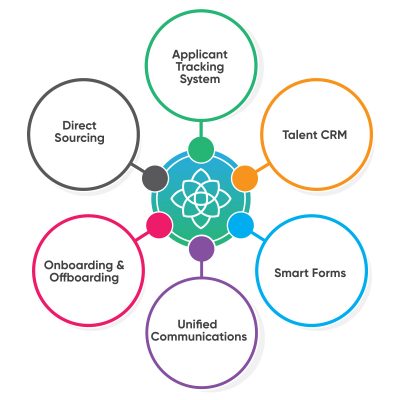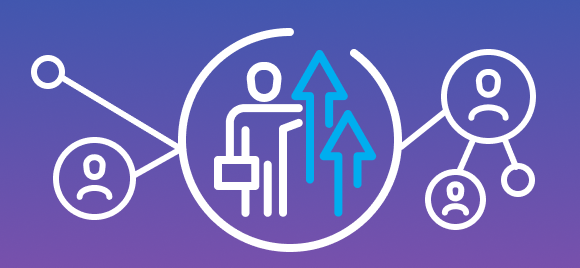When you think of a natural ecosystem like a pond, your mind might not drift towards the complex interrelationships between the systems of plants, insects, fish and mammals that populate the ecosystem. But a complex ecosystem like a pond is more than the sum of its parts because of those relationships, leading to natural diversity and sustainability. At the same time, an imbalance in any aspect of the ecosystem can spell trouble for its relationship to other elements in the system. That’s why wildlife management programs focus on the holistic habitat in question as opposed to one species or element – the various elements are all related and dependent on one another.
The same rings true for the staffing process. When disparate elements and tools are managed in a siloed environment, there is less ability to realize benefits gained by integration and interoperability.
As staffing teams are working towards maximizing proficiency, it is becoming more apparent that not only do the cogs of each machine need to run without friction, but multiple machines have to work in tandem to establish a solid framework. When hiring tools and functionalities integrate and interoperate, they form the foundational structure of a workforce solutions ecosystem.
The Advent of Workforce Solutions Ecosystems
Traditionally, the many facets of staffing have been treated as distinct business functions having their corresponding mode of operation. However, this is no longer conducive to the dynamic nature of the current staffing environment. Swivel-seating, manual data compilation, and other passive practices once had a time and place to shine, not because of efficacy but due to a lack of digital resources.
Even before the pandemic made remote working a necessity, the demand for contingent workers was on the rise. Everything since has only accelerated the ramp up of contingent hiring and requires technology to match the escalated expectations of hiring outcomes. Such technological advancements that support hiring efforts collectively are recognized as core to a workforce solutions ecosystem.
Workforce solutions ecosystems are somewhat new to the game. An Oxford Economics survey found that 83% of executives in North America utilize contingent workers; yet, 34% feel they are limited by technological incompetence, marking a gap in adoption of contemporary solutions.
What the ecosystem concept highlights is the need for the facets to unite to take a comprehensive approach to talent acquisition. Liz Bradley, Director of Communications, Scout Exchange, emphasizes this: “Ecosystems allow employers to have a unified, holistic view of total talent management across the organization. It also allows for more flexibility and cost efficiency over traditional agency approaches because everything is connected and streamlined under one platform – attracting and acquiring talent, managing and developing talent, understanding and planning talent, as well as extending talent.”
The beauty of the word ecosystem is that it inherently embodies harmony. A business that employs the workforce solutions ecosystem is harmonious within itself and with its external connections, allowing it to achieve aspirational results faster and better than any singular competency.
Components of the Workforce Solutions Ecosystem
In the 2020 edition of their report on workforce solutions ecosystems, Staffing Industry Analysts (SIA) delineated the six sections of the ecosystem as Staffing, Process Outsourcing, Payroll/Compliance, Direct Work Engagement, Talent Acquisition Technology, and Other Workforce Solutions. The scope of every section can be understood as:
- Staffing – Sourcing and recruiting contingent labor
- Process Outsourcing – Human Resource Outsourcing (HRO), Business & Recruitment Process Outsourcing (BPO & RPO), Managed Service Programs (MSP)
- Payroll/Compliance – Payroll Organization, Independent Contractor (IC) services
- Direct Work Engagement – SOW consulting services, Robotic Process Automation (RPA)
- Talent Acquisition Technology – Candidate discovery, assessment, processing, and engagement
- Other Workforce Solutions – HR consulting, outplacement, training & accreditation
Prosperix encompasses all six functions through its offerings such as Prosperix VMS, Crowdstaffing Hiring Marketplace, and our Workforce Solutions suite, which help with:
- Crowdstaffing Hiring Marketplace – Hire at scale using a network of suppliers and talent pools
- Prosperix VMS – Manage your workforce and achieve outstanding hiring outcomes
- On-Demand Talent Pools – Speed up time-to-hire with the highest quality talent currently available on the market
- Direct Sourcing – Access additional talent pools to make hiring quick and cost effective
- Workforce Solutions – Expert strategy, support, and management of your contingent workforce
Combined, Prosperix’s solutions ecosystem reflects our ideology of making contingent workforce hiring and management a seamless experience. Users of our workforce solutions can realize the benefits of an integrated and unified ecosystem that solves the end-to-end hiring process for organizations.

To learn more about our solutions and ecosystem approach, please visit our website or schedule a demo below.

